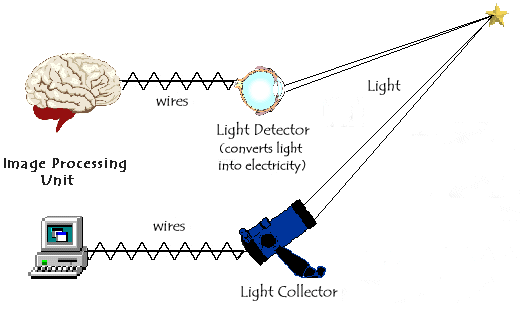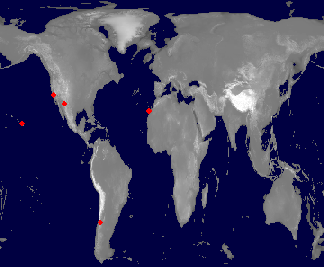Telescopes have to do (only) a few things:
- Point to various places on the sky
- "Track" objects as they drift across the sky
- Focus the light from objects onto a detector

At the end of the last century, the biggest telescopes had mirrors with diameters of around 40 inches (1 meter) and observations were "visual". There was a steady increase in mirror size and mechanical sophistication up through the 1950's when the Palomar "200 inch" (5 meter) telescope went into operation. The Soviets built a 6m mirror telescope that never worked very well. The Palomar reigned as the biggest useful telescope until 1994 when the first of two Keck telescopes was completed which had a 10m (400", 33.3 foot) diameter mirror.
